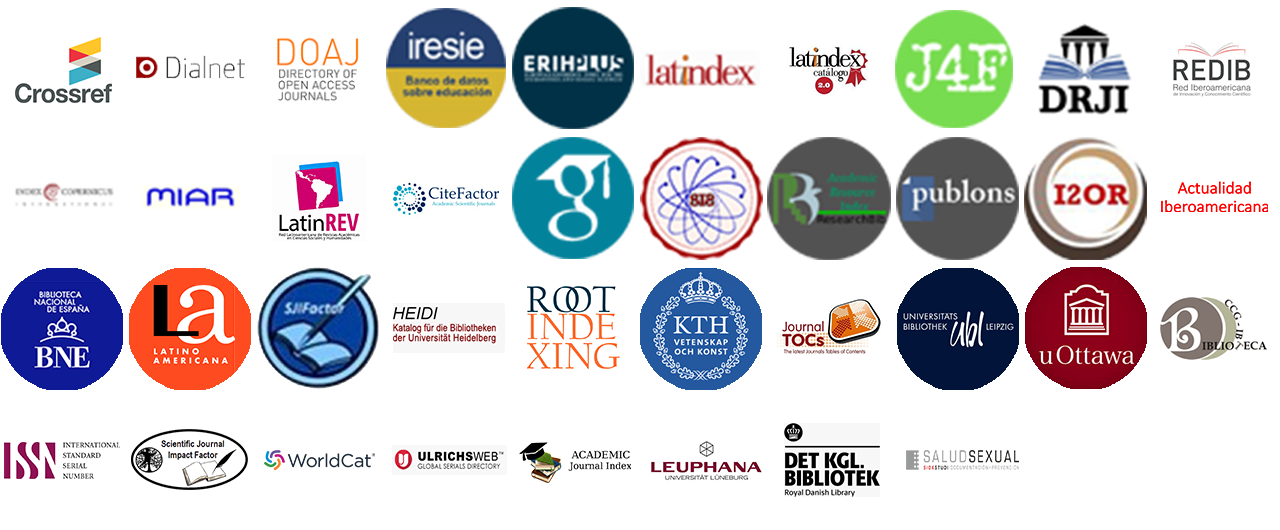Quantitative methods students’ perception during a pandemic: e-learning support and course satisfaction
DOI:
https://doi.org/10.36825/RITI.10.22.006Abstract
The pandemic caused by COVID-19 removed the resistance to the digitalization of Higher Education (HE), which allowed the remaking of universities from innovation, flexibility, and hybrid and inclusive educational models. This research aimed to study the perception of e-learning support and students’ satisfaction with Quantitative Methods subjects. For this purpose, we applied an online survey with 315 participants, through the second semester of 2021, from the University Center for Economic and Administrative Sciences (CUCEA) at the University of Guadalajara. Using exploratory factor analysis, we studied the survey responses. Three categories of support were identified: teacher support, peer support, and technical support. The empirical evidence showed that the support received is significantly related to student satisfaction, especially from their professor during e-learning through a pandemic. Likewise, many students considered that higher participation should have been during their online classes. In contrast, others believed greater involvement of their classmates could have improved the class dynamics. The results found are helpful for planners and decision-makers in HE because the educational model cannot go back to how it was before the coronavirus pandemic.
References
Komljenovic, J. (2020). The Future of Value in Digitalised Higher Education: Why Data Privacy Should Not Be Our Biggest Concern. Higher Education, 83, 119-135. https://doi.org/10.1007/s10734-020-00639-7
Williamson, B., Sian, B., Suellen, S. (2020). The Datafication of Teaching in Higher Education: Critical Issues and Perspectives. Teaching in Higher Education, 25 (4), 351–65. https://doi.org/10.1080/13562517.2020.1748811
Graham, C. R. (2006). Blended Learning Systems: Definition, Current Trends, and Future Directions. En C. J. Bonk, C. R. Graham (Eds.) The Handbook of Blended Learning: Global Perspectives, Local Designs (pp. 3-21). Pfeiffer Publishing. http://curtbonk.com/graham_intro.pdf
Juan, A., Huertas, A., Steegmann, C., Córcoles, C., Serrat, C. (2008). Mathematical E-Learning: State of the Art and Experiences at the Open University of Catalonia. International Journal of Mathematical Education in Science and Technology 39 (4), 455–71. https://doi.org/10.1080/00207390701867497
Martínez, V. (2017). Educación Presencial versus Educación a Distancia. La Cuestión Universitaria, (9), 108–116. http://polired.upm.es/index.php/lacuestionuniversitaria/article/view/3582
Collis, B., Bruijstens, H., der van Veen, J. K. (2003). Course Redesign for Blended Learning: Modern Optics for Technical Professionals. International Journal of Continuing Engineering Education and Life-Long Learning , 13 (1–2), 22–38. https://doi.org/10.1504/ijceell.2003.002151
Sedaghatjou, M., Hughes, J., Liu, M., Ferrara, F., Howard, J., Mammana, M. F. (2021). Teaching STEM Online at the Tertiary Level during the COVID-19 Pandemic. International Journal of Mathematical Education in Science and Technology, 1-17. https://doi.org/10.1080/0020739X.2021.1954251
Sedaghatjou, M., Kaur, H., Williams, K. A. (2020. Developing Interactive Demonstrations for the Online Mathematics Classroom. En J. P. Howard, J. F. Beyers (Eds.), Teaching and Learning Mathematics Online (pp. 337–356). Chapman and Hall/CRC. https://doi.org/10.1201/9781351245586-20
University of Guadalajara. (2020). Informe 2020. Rectoría General. https://rectoria.udg.mx/informe2020
University of Guadalajara. (2021). 2do. Informe de Actividades CUCEA. https://informe-2020-2021.cucea.udg.mx/wp-content/uploads/2021/06/informe-cucea-2020-2021.pdf
University of Guadalajara. (2020). Plan CUCEA Covid 19. https://contingencia-covid-19.cucea.udg.mx/plan-cucea-codiv-19/
Lubis, A. H., Dasopang, M. D. (2021). Online Learning during the Covid-19 Pandemic: How Is It Implemented in Elementary Schools? Premiere Educandum : Jurnal Pendidikan Dasar Dan Pembelajaran, 11 (1), 120-134. https://doi.org/10.25273/pe.v11i1.8618.
Lee, S. J., Srinivasan, S., Trail, T., Lewis, D., Lopez, S. (2011). Examining the Relationship among Student Perception of Support, Course Satisfaction, and Learning Outcomes in Online Learning. The Internet and Higher Education, 14 (3), 158–63. https://doi.org/10.1016/j.iheduc.2011.04.001
Mc Cullough, C., Virginie, A. (2006). E-Learning in Europe: How Do Trainers, Teachers and Learners Rate e-Learning? https://www.cedefop.europa.eu/files/etv/Upload/Exchange_views/Surveys/Report_survey_Teachers_and_Learners_and_e-learning_final.pdf
Díaz Rosabal, E. M., Díaz Vidal, J. M., Gorgoso Vázquez, A. E., Sánchez Martínez, Y., Riverón Rodríguez, G., Santiesteban Reyes, D. C. (2020). La dimensión didáctica de las tecnologías de la información y las comunicaciones. Revista de Investigación en Tecnologías de la Información (RITI), 8 (15), 8-15. https://doi.org/10.36825/RITI.08.15.002
Downloads
Published
How to Cite
Issue
Section
License
Copyright (c) 2022 Revista de Investigación en Tecnologías de la Información

This work is licensed under a Creative Commons Attribution-NonCommercial-NoDerivatives 4.0 International License.
Esta revista proporciona un acceso abierto a su contenido, basado en el principio de que ofrecer al público un acceso libre a las investigaciones ayuda a un mayor intercambio global del conocimiento.
El texto publicado en la Revista de Investigación en Tecnologías de la Información (RITI) se distribuye bajo la licencia Creative Commons (CC BY-NC
 ), que permite a terceros utilizar lo publicado citando a los autores del trabajo y a RITI, pero sin hacer uso del material con propósitos comerciales.
), que permite a terceros utilizar lo publicado citando a los autores del trabajo y a RITI, pero sin hacer uso del material con propósitos comerciales.



